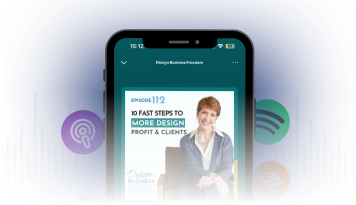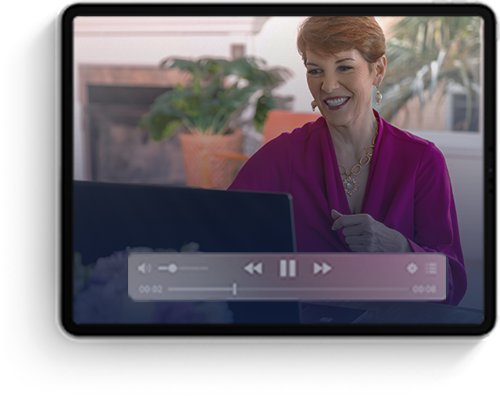The 20 Keys to Effective Client Communication for Interior Designers
Effective client communication is the cornerstone of a successful design business. It not only helps you land projects but also ensures that your clients are satisfied throughout the process, even when challenges arise. In this guide, we’ll explore 20 essential keys to mastering client communication, helping you build stronger relationships, avoid misunderstandings, and maintain your professional integrity through effective client communication.
1. Listen First
It may sound obvious, but truly listening is a skill that many overlook. Whether your client is speaking to you in person, over the phone, or via email, take the time to fully understand what they’re saying before formulating your response. Listening first ensures that you grasp the full context and can address their concerns effectively, which is a crucial part of effective client communication.
2. Clarify to Understand
Don’t assume you’ve understood everything correctly—confirm it. Whether in a verbal conversation or via email, take the time to restate or paraphrase what the client has said to ensure you’re both on the same page. This simple step can prevent countless misunderstandings and is key to effective client communication.
3. Ask for What They Want
When clients are confused or frustrated, it’s important to ask clear, direct questions to understand their needs. This doesn’t mean abandoning your leadership role in the project, but it does mean seeking clarity so you can meet their expectations. Clear questioning is a hallmark of effective client communication.
4. Confirm Your Understanding
Separate facts from feelings and fiction. When dealing with client communication, ensure that what you understand as the facts are indeed accurate. This step is crucial in preventing unnecessary conflicts and is vital to maintaining effective client communication.

5. Keep Your Cool
In stressful situations, maintaining your composure is essential. Remember, when two people argue, both lose. Keep a level head and focus on resolving the issue rather than getting caught up in emotions. Staying calm under pressure is a key component of effective client communication.
6. Never Take It Personally
You never know what else might be going on in your client’s life. Whether they’re dealing with personal challenges or professional stress, it’s important to separate yourself from their frustrations. Don’t take their words or actions as a personal attack.
7. Allow Them to Vent
Sometimes, clients just need to vent. Allow them to express their frustrations without interrupting or taking it personally. Once they’ve had their say, you can calmly address the issue and move forward.
8. Never Disagree—Seek to Understand
Rather than jumping into a disagreement, focus on understanding the client’s perspective. This approach helps to de-escalate tensions and opens the door for constructive dialogue.
9. Write Down What You Hear
Documenting your client’s requests and concerns is key to ensuring that nothing is overlooked. This also gives you a reference point to return to in future communications.
10. Get All the Facts
When an issue arises, gather all the necessary information before responding. This includes understanding the client’s expectations, the specifics of the situation, and any relevant background details.
11. Look for a Win-Win Solution
Aim to find solutions that benefit both you and your client. Compromise is often necessary, but it should never be at the expense of your professional integrity or the project’s success.
12. Consider the Long-Term Impact
Think about how your actions today will affect your reputation and client relationships in the long run. Protecting your professional reputation should always be a priority.
13. Don’t Be Afraid
Whether it’s a difficult conversation or a challenging client, don’t shy away from addressing issues head-on. Confidence in your communication is key to maintaining control of the situation.
14. Seek Legal Counsel if Necessary
If a situation escalates beyond what you can manage, don’t hesitate to seek legal advice. Protecting your business and your personal well-being is paramount.
15. Use a Sound Legal Agreement
Always have a robust, legally sound agreement in place with your clients. This protects both parties and provides a clear framework for the project.
16. Avoid Being Vindictive or Vengeful
Never let personal feelings influence your professional decisions. Focus on resolving issues fairly and professionally.
17. Allow Clients to Save Face
When resolving conflicts, ensure that your client doesn’t feel humiliated or defeated. Preserving their dignity helps maintain a positive relationship moving forward.
18. Ask Yourself: What Would Love Do?
This simple question can guide you in handling difficult situations with empathy and compassion, helping to de-escalate conflicts and build trust.
19. Learn to Rise Above
Sometimes, the best approach is to let go and move on. Don’t carry the baggage of past conflicts; instead, focus on the future with a positive mindset.
20. Accept Short-Term Loss for Long-Term Gain
In some cases, compromising in the short term can lead to greater benefits in the long run. Always consider the bigger picture when making decisions.
Key Takeaways
Mastering client communication is about more than just avoiding conflicts—it’s about building trust, fostering strong relationships, and ensuring that every project runs smoothly. By applying these 20 keys, you can enhance your communication skills, protect your reputation, and create a more successful design business through effective client communication. If you’re ready to increase your interior design practice profits, work exclusively with ideal clients, and enjoy the time and resources for your extraordinary life, explore your coaching options. We’ve got your back in the business of interior design.





